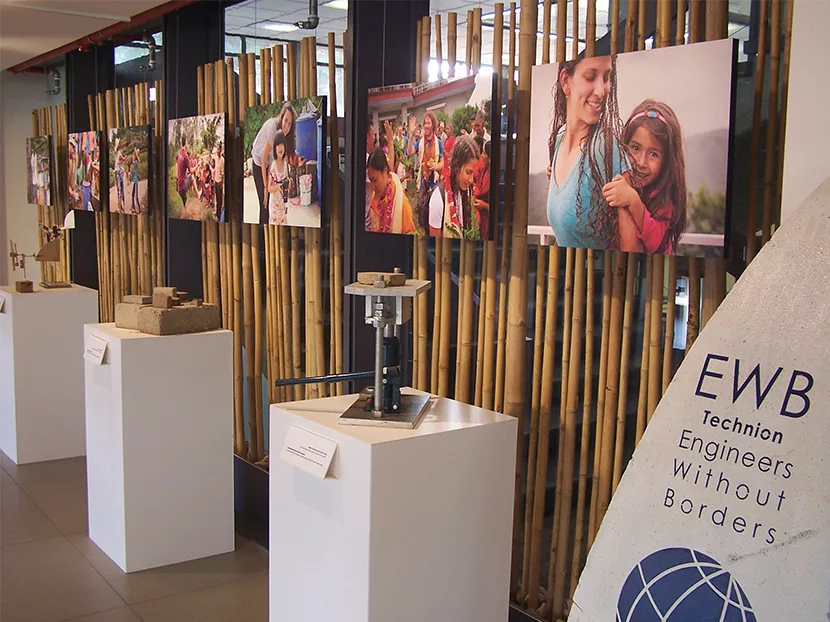There’s a retired gentleman in our industry named Scott Denny who lives in the Bay Area near Stanford University. He sends me regular emails about plumbing, always thoughtful in nature. I wrote about his daughter some years ago who was working in Cambodia with the Cambodian Children’s Dream Organization, building wells and latrines for families in Cambodia. She’s the reason I donated money and had a latrine built for a family of 11 back in 2014. To this day, a plaque with my name hangs over its door, and I remain thankful that I did that.
During one of his latest adventures to the Amazon rainforest, I received the following email from Scott: “In the process of reading the book on the first use of chlorine in drinking water while sitting in a cottage in the Amazon rainforest, I thought about how we in the first world take our infrastructure for granted. Then, I wondered if there were an engineering organization like Doctors Without Borders.” Low and behold there is.
Engineers Without Borders (EWB) is a U.S. based organization with 16,800 volunteer members. Their mission is to meet the basic human needs of people throughout the world with engineering projects focused on water supply, sanitation, energy, agriculture, civil works and structures. While the projects are more civil than plumbing in nature, it comes down to the same issue as in Cambodia — wells and latrines are of the utmost priority.
EWB started with an idea: connecting developing communities with specific infrastructure needs to engineers who have the expertise to work with them in developing a sustainable solution; the sustainability is important. It’s like the old expression: give a man a fish, and he will eat for a day; teach a man to fish, and he will sit in a boat and drink beer all day long. Or something like that.
The first step came in April of 2000 when the Belize Ministry of Agriculture invited Dr. Bernard Amadei, a civil engineering professor in Boulder, Colorado, to visit San Pablo and evaluate their water supply. He accepted the invitation and learned, of course, that the water and sanitary infrastructure was non-existent so children had to carry water from miles away.
Dr. Amadei went home and planned a return visit, this time with eight of his students and another skilled civil engineer. The team partnered with the local community to install a drinking water system powered by a local waterfall — a simple, low-cost, sustainable solution to their most fundamental problem. This became the first EWB project.
Dr. Amadei formalized EWB in 2002. During that year, the student chapter grew to 96 members who completed three projects similar to that in Belize, all low-tech, high-impact, sustainable designs. And the students gained practical skills and experience that cannot be learned in the classroom.
Since that early introduction, this model of engineering students partnering with professors, professionals and communities has grown to be 300 chapters strong, spanning 45 countries and five continents, and impacting the lives of 2.5 million people around the world.
The four basic tenets of EWB are as follows:
- Communities are the most effective agents for lasting, positive change
- Sustainability isn’t just a goal; it’s a practice
- Engineering solutions create opportunities for communities to thrive
- Leadership is fostered through multi-disciplinary, cross-cultural and hands-on interactions
To further demonstrate the sustainable nature of EWB projects and designs, the students follow up with the communities they serve 1 year and 5 years after project completion to confirm that things are still operating well — or not. The goal is not to just drill a well and dig a latrine; it is to teach the community how to build their own wells and maintain their own latrines.
The practical approach to each project is specific to the community, geography, politics and other critical factors. A water supply solution in Kenya might be dramatically different from a water supply solution for another community only a few miles away.
There are six project categories aimed at serving the breadth of a community’s needs:
- Water supply projects that provide source, storage, distribution and treatment for the community. This can include wells, bios and filters, rainwater collection and more.
- Sanitation projects that provide sustainable waste solutions for the community, generally latrines, gray or black water systems.
- Civil works projects that develop roads, drainage, dams, erosion control and solid waste management to serve the community’s needs.
- Agriculture projects, including irrigation and harvest processing to improve farming and production capabilities for the community.
- Energy projects that include fuels (biofuels or cookstoves) and electricity (solar, water or grid power) to serve communities in a sustainable fashion.
- Structure projects include bridges and buildings for safer access to health care, economic opportunities and education.
EWB also has a consulting service, the Engineering Service Corps, that is involved more from a stateside planning perspective rather than on-site project specific participation. They utilize their most seasoned volunteers to organize the international development center. The corps provides engineering studies, owner’s representation, planning, design, and monitoring and evaluation for non-government organizations and governments alike. They balance the technical challenges with sustainable solutions as a best fit for the client agency, communities and broader environment.
Now that you know as much as I could learn about EWB, there are several ways you can participate. You can volunteer, which might be impractical for your day job but might be a nice thing to do in retirement. If you have a student studying civil engineering, they might be very interested in getting involved. You can sign up for their newsletter at www.ewb-usa.org where you can also donate. You could go to their annual conference Sept. 28-29 in Milawi (west of Mozambique). Or, you can like their Facebook page — probably easier than traveling to Milawi.






